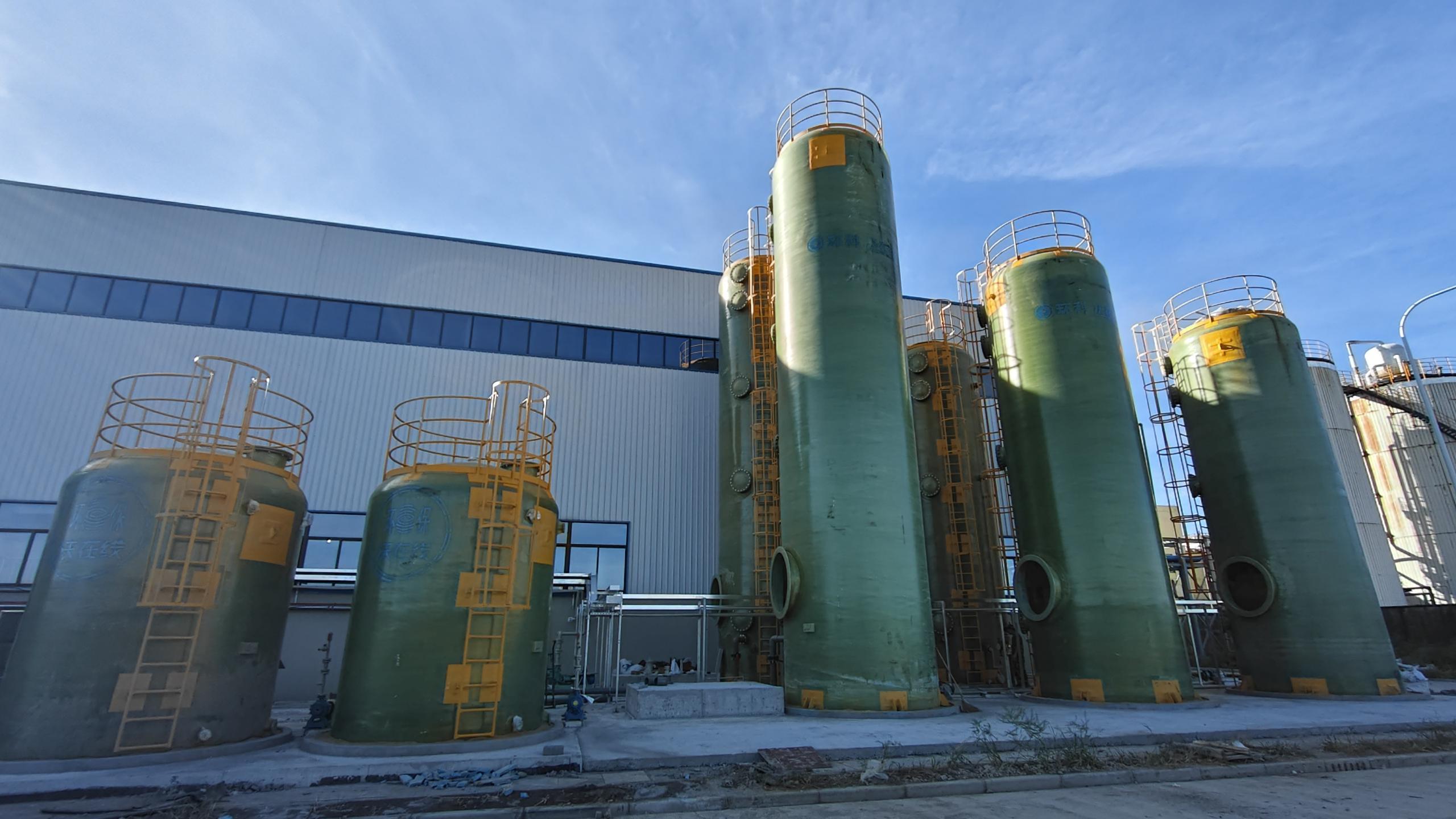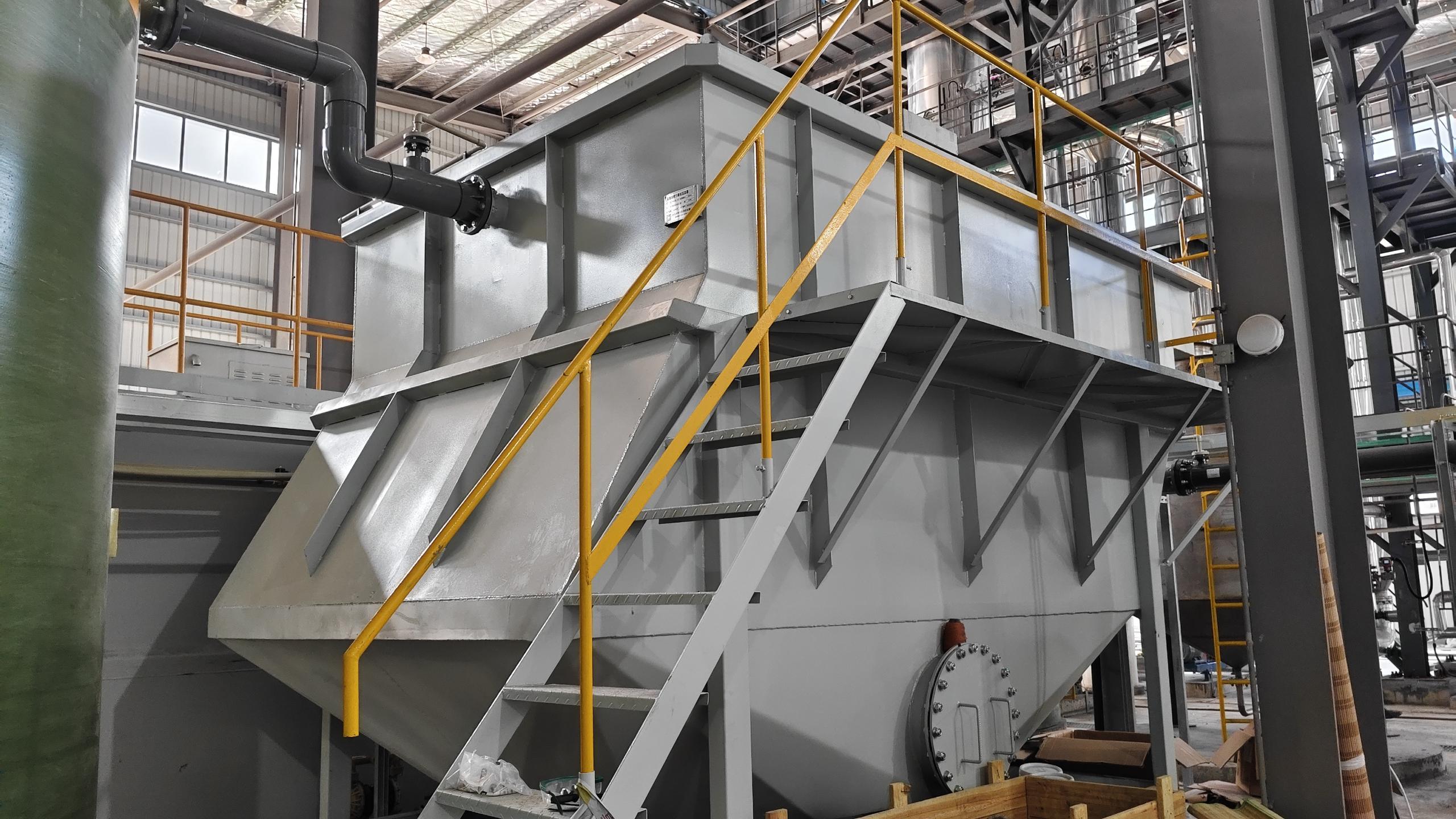15
2025
-
08
Practical application of nitrogen and fluorine removal technology for flue Gas Washing Wastewater in the Thermal Power, heating and coal-fired Boiler industries
Author:
In the fields of thermal power, heating, and coal-fired boiler flue gas washing wastewater treatment, Huanke Environmental Protection, with its profound understanding of nitrogen and fluorine removal technologies, has innovatively designed a combined system of ammonia nitrogen stripping towers, Lanmeila sedimentation tanks, and breakpoint chlorination processes, providing an efficient solution for the treatment of high-concentration nitrogen pollutant wastewater. This system, through the collaborative effect of each unit, not only breaks through the limitations of a single process but also achieves a dual improvement in processing efficiency and operational stability.
Ammonia nitrogen stripping tower: Enhanced pretreatment, solving the problem of high ammonia nitrogen
The ammonia nitrogen stripping tower designed by Huanke Environmental Protection has been specially optimized for the high ammonia nitrogen characteristics of the flue gas washing wastewater. The tower body adopts a counter-flow contact structure. The wastewater is lifted in the pH adjustment tank (sodium hydroxide is added to control the pH value at 10-11) and then sprayed down from the top of the tower, fully contacting with the air blown in from the bottom of the tower. Under alkaline conditions, ammonia nitrogen (NH4+) in wastewater is converted into free ammonia (NH3), which is carried out of the water body by the air, thus achieving the initial removal of ammonia nitrogen.
To enhance the stripping efficiency, the tower is filled with specially designed multi-faceted hollow sphere packing to increase the gas-liquid contact area. It is also equipped with a temperature control device to maintain the wastewater temperature at 30-40℃. By taking advantage of the characteristic that ammonia volatilization increases with rising temperature, the removal rate of ammonia nitrogen is raised to 70%-85%. Compared with traditional stripping equipment, this design reduces energy loss by optimizing the water and gas distribution system. Moreover, the exhaust gas is treated by an acid absorption tower and discharged up to standard, completely solving the problem of secondary pollution. In a certain thermal power plant application, when the influent ammonia nitrogen concentration was 800-1200mg/L, it could be reduced to 150-200mg/L after treatment by the stripping tower, laying a solid foundation for subsequent advanced treatment.
Lanmeila sedimentation tank: Efficient solid-liquid separation, facilitating the connection between fluoride removal and nitrogen removal
The wastewater that has undergone stripping treatment still contains fluoride ions and some suspended impurities. Huanke Environmental Protection adopts the Lanmeila sedimentation tank to achieve the dual goals of sludge-water separation and the initial removal of fluoride ions. This sedimentation tank integrates the advantages of inclined tube sedimentation and high-efficiency flocculation technology. The Lanmeila inclined plates (with an inclination of 60°) installed at an Angle inside the tank significantly shorten the sedimentation distance of particles, increasing the sedimentation efficiency by 3 to 5 times compared to traditional horizontal flow sedimentation tanks.
In the fluoride removal process, after the wastewater enters the reaction zone, calcium chloride solution is precisely added through a metering pump. Fluoride ions react with calcium ions to form calcium fluoride precipitate (Ksp=3.4×10-11). At the same time, polyaluminium chloride (PAC) and polyacrylamide (PAM) are added to enhance the flocculation effect and form large and dense flocs. After the mixed liquid enters the sedimentation zone, under the guiding effect of the Ramella inclined plates, the flocs rapidly settle to the bottom of the tank, while the supernatant rises and is discharged along the gaps of the inclined plates.
The uniqueness of this design lies in the integrated layout of the reaction zone and the sedimentation zone, which reduces the hydraulic retention time (the total retention time is controlled at 1.5 to 2 hours), and the bottom sludge (with a moisture content of about 97%) is regularly discharged through an automatic sludge discharge system, avoiding sludge accumulation and affecting the treatment effect. Actual operation data shows that the sedimentation tank can remove 60% to 70% of fluoride ions, and at the same time, it can retain over 90% of suspended particulate matter, ensuring the stability of the wastewater quality entering subsequent processes.
Breakpoint chlorination process: Deep denitrification to ensure effluent meets standards
The residual ammonia nitrogen in the wastewater that has undergone the first two stages of treatment still needs further treatment to meet the discharge standards. The breakpoint chlorination system designed by Huanke Environmental Protection achieves deep denitrification through precise control: in the reaction tank, an online monitoring instrument is used to monitor the residual chlorine value of the wastewater in real time, and the PLC control system automatically adjusts the dosage of sodium hypochlorite to ensure that the molar ratio of chlorine to ammonia nitrogen is controlled at around 7.6:1 (the critical point of the breakpoint reaction).
Under acidic conditions (pH=6-7), hypochlorous acid (HClO) oxidizes ammonia nitrogen to nitrogen gas (2NH4+ + 3HClO → N2↑ + 3H2O + 5H+ + 3Cl-), avoiding the formation of harmful chloramine substances. The wastewater after the reaction enters the dechlorination tank, where sodium sulfite is added to remove the excess residual chlorine. Eventually, the ammonia nitrogen concentration in the effluent is reduced to below 15mg/L, meeting the first-level A standard of the "Discharge Standard of Pollutants for Municipal Wastewater Treatment Plants" (GB18918-2002).


Synergy advantages: From technology integration to efficiency improvement
The "stripping - precipitation - oxidation" combined process of Huanke Environmental Protection is not merely a simple accumulation of technologies, but rather achieves an effect greater than the sum of its parts through process optimization. The pretreatment of the ammonia nitrogen stripping tower significantly reduces the consumption of chemicals for subsequent breakpoint chlorination, cutting the operating cost by 30% to 40% compared to directly using the chemical oxidation method. The Lanmeila sedimentation tank not only removes fluoride but also eliminates suspended impurities, avoiding the interference of particulate matter on the chlorination reaction and enhancing the stability of the oxidation efficiency.
In an application case of a certain heating enterprise, the system's treatment capacity reached 500m³/d, with the influent ammonia nitrogen concentration being 850mg/L and the fluoride ion concentration 120mg/ L. After treatment, the ammonia nitrogen in the effluent was reduced to 12mg/L and the fluoride ion concentration to 8mg/L, both exceeding the discharge standards. Moreover, the treatment cost per ton of water was controlled within 1.8 yuan. It is 25% lower than the traditional process. This achievement not only verified the feasibility of the technology, but also highlighted the innovative strength of Huanke Environmental Protection in the field of industrial wastewater treatment.
With the continuous upgrading of environmental protection requirements, Huanke Environmental Protection is further optimizing the intelligent control level of this system. By introducing AI algorithms to predict water quality fluctuations, it realizes the dynamic adjustment of chemical dosing and process parameters, providing stronger technical support for the green transformation of the thermal power and heating industries.
Related Products
Practical application of nitrogen and fluorine removal technology for flue Gas Washing Wastewater in the Thermal Power, heating and coal-fired Boiler industries
2025-08-15
Membrane separation: Green and efficient acid recovery for rare earth metallurgical leachate
2025-08-13
Electrodialysis experimental machine: Technical Practice of Concentrating and purifying Waste acid
2025-08-11
Electrodialysis: The "Resource Revolution" for Chemical/Pharmaceutical Wastewater, the Breakthrough from pollution Control to Recycling
2025-08-06
Huanke Environmental Protection Technology
HOTLINE:
Address:Optoelectronic Industry Accelerator in Weifang Hi-Tech Zone, Shandong Province, China
Contact:Zhang Gong
WhatsApp:+8619953608211
Email:eco.eqpt@gmail.com


Consult

TikTok
Copyright © 2023 Shandong Huanke Environmental Protection Technology Co., Ltd
